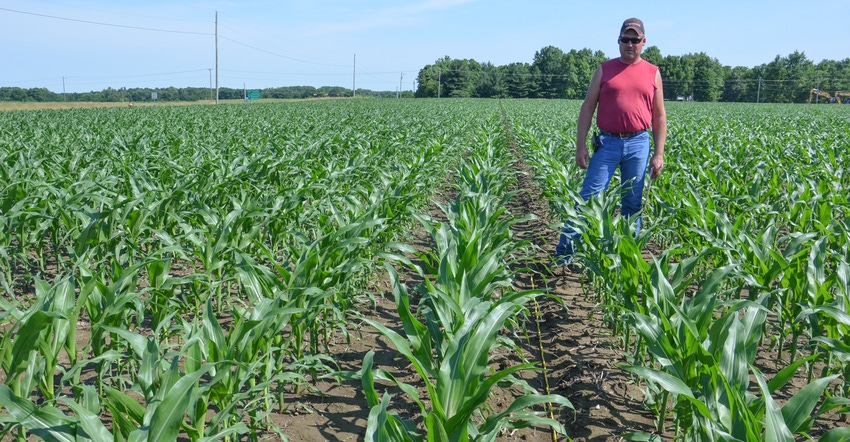
The third year of an exclusive study confirmed two previous years’ results. The upshot: Know how each hybrid you’re planting responds to seeding rates before choosing final rates. That applies whether you’re chasing top yield or the most net return.
Bob Nielsen, Purdue University Extension corn specialist, says the summary of the replicated field trial was simple for 2018. “One hybrid responded to increasing seeding rate and was still responding at the highest rate tested, and the other hybrid didn’t show a significant response. The yield response curve for the second hybrid was a flat line from the lowest seeding rate to the highest rate.”
Find optimum economic rate
The three-year trial began in 2016 at the Throckmorton-Purdue Agricultural Center near Romney, Ind. It’s a joint project of Purdue Extension, the Throckmorton center and Indiana Prairie Farmer. The objective is zeroing in on economic seeding rates and determining if they vary by hybrid.
The replicated trial consists of five seeding rates and two hybrids. Seed was donated by Beck’s. The same two hybrids were used during the first two years, and a new pair of hybrids was selected for 2018. Beck’s chose hybrids with different characteristics that should represent the extremes of how hybrids might react to varying seeding rates.
Special thanks to Karen Mitchell, Tippecanoe County Extension ag educator; Pete Illingworth and other crew members at the Throckmorton research center; Kevin Cavanaugh and Daniel Bechman of Beck’s; and Nielsen. The plot was harvested with a yield monitor recalibrated for each hybrid. Nielsen analyzed results.
In 2018, seeding rates were 24,000; 29,000; 32,000; 35,000 and 40,000 seeds per acre. The plot was planted in mid-May with a John Deere MaxEmerge planter equipped with a Precision Planting 20/20 SeedSense monitor. For the hybrid that responded to varying seeding rates, stand counts ranged from a low of 23,500 to a high of 37,500 plants per acre. For the hybrid that didn’t respond, population varied from 23,500 to 38,500.
For the hybrid that responded, yield in dry bushels ranged from 199.9 bushels per acre on one 24,000 seeding rate treatment to a high of 242 bushels on one 40,000 rate pass. For the hybrid that didn’t respond to seeding rate, yield varied from 193.6 bushels per acre for one 24,000 rate pass to 236.6 bushels on a 29,000 rate pass. Nielsen notes, however, that what happens across the replicated trial determines results, not what happens on individual passes.
Bottom line
In two previous years, optimum economic seeding rate varied by hybrid. The difference was more pronounced in 2018.
“The economic optimum seeding rate for the hybrid that showed no significant yield response to plant population would be the lowest one evaluated in the trial,” Nielsen says. That was 24,000 seeds per acre.
“The yield of the other hybrid increased linearly approximately 2 bushels per 1,000-plant increase within the range of population evaluated in the trial,” he says. “If one assumes corn at $3.50 per bushel, that equals $7 added income per each 1,000 plants. If seed costs $250 for an 80,000-kernel bag, every 1,000 seeds cost about $3. So estimated return would continue to increase for seeding rates up to the highest one evaluated in the trial.”
What’s the takeaway after three years? Talk to your seeds sales representative and select a seeding rate that makes economic sense for each hybrid, Nielsen concludes.
About the Author(s)
You May Also Like




